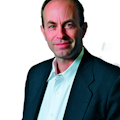CCAT's Laser Applications Lab tries out Trumpf "cavity-dump" disk laser
East Hartford, CT--The Connecticut Center for Advanced Technology (CCAT) Laser Applications Laboratory (LAL) has worked with Trumpf (Farmington, CT) to bring the first Trumpf TruMicro 7050 in the United States to CCAT's facility to evaluate for various process-evaluation trials.
The TruMicro 7050 is an example of a new disk-laser technology that Trumpf has been developing. Unlike Q-switched Nd:YAG lasers, which have limited pulse width, pulse frequency, and average powers, the TruMicro 7050 uses a cavity-dump design that allows for short pulses to be achieved independent of the frequency and at higher average powers. Another advantage of the system is that the laser can be fiber-delivered to the processing work cell. At CCAT, the 7050 will operate at a 30 ns pulse width and an average power of 750 W.
CCAT's LAL team will be investigating how the TruMicro 7050 compares to other lasers that are presently being used or being considered for various applications. The applications of interest include laser machining, coating removal, surface cleaning, and drilling. More specifically, CCAT will be determining whether the characteristics of the TruMicro 7050 will lead to improved removal rates and quality in the machining of aerospace components.
Similarly, coating removal from aircraft components has been demonstrated with laser technologies, but implementation has been slow because of the rates and concern of interaction times. In both cases the ability to have short pulse widths and high average powers may better fit the capabilities of the TruMicro 7050.
CCAT is a non-stock, tax-exempt corporation that provides services and resources to entrepreneurs and businesses, and through collaboration with industry, academia, and government, helps companies innovate and compete.
About the Author
John Wallace
Senior Technical Editor (1998-2022)
John Wallace was with Laser Focus World for nearly 25 years, retiring in late June 2022. He obtained a bachelor's degree in mechanical engineering and physics at Rutgers University and a master's in optical engineering at the University of Rochester. Before becoming an editor, John worked as an engineer at RCA, Exxon, Eastman Kodak, and GCA Corporation.
